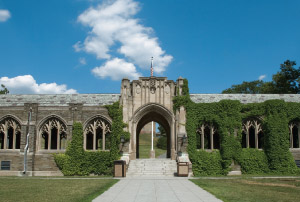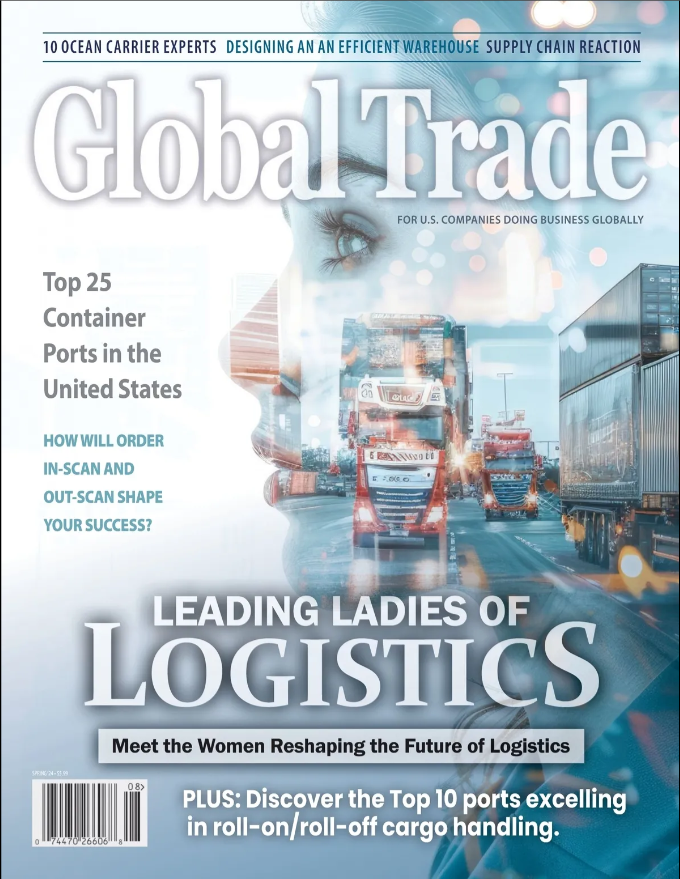Empire Statement
How New York is Helping its Shippers Every Way it Can
Ioxus, a small clean-tech company with big plans, originated in a converted Agway feed shed in upstate Oneonta in 2007 and began looking for bigger space almost immediately. The company manufactures compact renewable energy rechargers known as ultra-capacitors, used by electric vehicles and wind turbines. From the start, it was obvious the company’s high-tech manufacturing processes required a bigger, newer infrastructure. When the Otsego County Industrial Development Agency suggested the company consider relocating to the 40,000-square-foot museum vacated by the U.S. Soccer Hall of Fame, president Mark McGough (pronounced Mac GUE) jumped on the deal. (Terms of the lease were not disclosed, but include option to buy.)
Already scouting short-term expansion opportunities and armed with a $21 million private-investor war chest, McGough then moved in earnest on the acquisition of a small Japanese company making similar products with a somewhat different technology. The deal, which closed in February, included the acquired company’s specialized manufacturing equipment. McGough announced plans to import the machinery across the ocean and install it in Oneonta; process improvements in the resulting configuration, he said, would raise margins.
Ioxus also announced it was hiring another two dozen or so workers, mainly mechanical engineers and packaging professionals. Overall, the export-focused company—about two-thirds of revenues come from Japan and China combined-—has expanded to 80 people, from 20 in 2010.
Government officials, clearly delighted at having an expanding company in their midst, have been generous in their response to the company’s applications for financial support. A total of five economic development entities have come through with grants or low-interest loans totaling approximately $4.5 million. The list includes NYSERDA, the New York State Energy Research and Development Authority; the Industrial Development Agencies of both Otsego County and Broome County; Otsego County itself; and the city of Oneonta.
“If you’re looking for a company that really got off the ground courtesy of state funding, we’re on that poster,” McGough says.
While few companies make business decisions solely to qualify for government incentives, rebates or subsidies—and fewer still would admit it—many business owners discover that dollars do flow to those who make locally favorable site selection decisions, are willing to abide by certain guidelines and can tolerate the sometimes nit-picking rules and arcane processes inherent in government funding.
(More Economic Development: Along the Ohio River Valley, America’s Original Industrial Giants are Back)
New York exporters—some new to cross-border trade, some of them veterans—are tapping a growing treasure chest brimming with grants and subsidies, incentives, credits, rebates and write-offs. With everyone from President Obama to the local I.D.A. chairman extolling the economic—read job-creation—value of exporting, there’s clearly financial reason to explore the myriad economic-development programs offered across the Empire State.
Some of this government largesse reflects exporting’s national status as flavor of the month. In Washington, the Obama administration has both promoted export creation and decentralized export-support services. Late last year, the White House launched a program called S.T.E.P. – State Trade and Export Promotion—in which the Department of Commerce funded programs in each state based on localized industry selections, extending the hand of cooperation to their state and local counterparts in operating these programs.
In New York, the program has helped fund nearly $900,000 worth of trade missions and similar export-marketing programs targeting the jewelry, biotech, renewable energy, fashion and music industries.
The program has not only restored the state’s trade-mission program after years of budget-cutting retractions, but seems to have encouraged state employees to interact more regularly with both their federal counterparts and business connections in foreign countries.
“You see more cooperation” across agency lines, says Joseph Schoonmaker, president of the New York District Export Council, a program organized by the Commerce Department to help small exporters in the New York City region. “People are talking to each other a little more now and know what others are doing” in different agencies and branches of government, he says.
It was New York’s S.T.E.P. program that brought Bill Palmer to Shanghai and Beijing earlier this year. President of AeroMed, a Utica air purifier specializing in hospital sales, Palmer was looking to increase sales overseas. Domestically, he says, business was contracting; U.S. hospitals made their major air-quality investments years ago, whereas countries like China and India are just now purchasing the necessary systems and technologies.
(More Economic Development: Energizing Exports—Six Energy Trends to Watch)
Palmer has been trying for years to break into the market, stymied by unsuitable distributors, the language barrier and unfamiliarity with China’s hospital-purchasing system. Earlier this year Palmer put aside his philosophical skepticism about taking export advice from government officials and sat down with local state economic-development specialists. In advance of a S.T.E.P. trade mission planned to bring medical product manufacturers to Shanghai, Palmer discussed his export goals, challenges and strategies in detail with a state China specialist.
The official then reached out to a series of coworkers based in Shanghai and Beijing; connected with federal counterparts at the Small Business Administration’s China offices; and touched base with industry connections of his own. The result, Palmer says, was little short of extraordinary. “I never expected to meet even one distributor in China who knew the technology, knew U.S. business culture, and spoke fluent English. On this trip I met several,” he says, delight in his voice. Between that trip and follow-up efforts with the department, he says, he’s met and vetted 10 solid potential partners.
“We can do business—and I think we will do business—with all 10,” he predicts. ”It’s been remarkable.”

While upstate Palmer was drawing China’s health-care industry into his crosshairs, across the state on Long Island James Silver was busy drawing a bead on its wine-drinking consumers—who, he says, already consume more French wine than do Americans. His goal: hook them on wines from New York State.
The entrepreneurial general manager of a small (annual sales: 11,000 cases) Long Island winery called Peconic Bay, Silver knew he needed to scale up significantly in order to talk export; his own output was far too small. Last year he did, building on the success of a separate venture, the Empire State Cellars—a winetasting room he’d recently opened in the nearby Tanger Outlet Center in Riverhead. Adopting a Big Tent approach, Silver sells not just Peconic Bay at Empire State Cellars, but retails more than 500 New York State wines, beers and spirits.
After multiple conversations with fellow wine makers, many of them skeptical or uninformed about export realities, Silver says, he had signed deals with nine other vineyards from both Long Island and the Finger Lakes, the state’s other main grape-growing region.
Working closely with a lineup of state agencies and their counterparts in China, Silver advanced plans to open a branch of Empire State Cellars in Shanghai. This summer, 30 products from nine of the brands he sells at Tanger go on sale in China at the International Exhibition & Trading Center of Wine & Beverage in Shanghai’s Waigaoqiao Free Trade Zone. Most of these brands have not exported previously. To promote sales, Silver has arranged promotional events, wine education classes, professional trade shows and matchmaking events for distributors and buyers.
Silver plans to introduce New York wines to China by emphasizing the New York name. “Chinese consumers certainly know the name ‘New York,’ and associate it with positive things; they just don’t associate it yet with wines,” says Silver. He describes his inventory as “well-made, hand-crated products from smaller family-owned and operated wineries,” and will emphasize those values in the marketing efforts to come.
Promoting his venture in a press release, Silver offered thanks to the long list of organizations that helped him take his business to the next level: the New York State Business Development Center, hosted by the State University of New York; the state Department of Agriculture and Markets; the New York Wine and Grape Foundation; the China International Exhibition and Trading Center of Wine and Beverage; and New York State Department of Economic Development.
While New York is home to some of the most advanced research programs in the world, at the same time economic development efforts have been hindered by idea flight: the frequent leakage of intellectual property across state lines. One response has been the expansion of state-run incubator programs, where professors and researchers get marketing and organizational help to commercialize the concepts, technologies and processes they’ve helped develop.
(Most intellectual property coming out of universities is shared between institutions and individual researchers. The exact formula for splitting proceeds varies; some universities maintain strict ownership of R&D results while others grant researchers the benefits. As a result, academics are often able to take research they’ve conducted in one state to other states and build revenue-producing business, or sell the research outright.)
Twenty years ago, Gregory J. Galvin founded Kionix to commercialize research done at nearby Cornell in the area of micromechanical manufacturing; from the breakthrough he envisioned an array of data storage and micro-optic products. Today, Kionix sells products to a variety of manufacturing and engineering companies in such areas as motion-based gaming, mobile handsets and TV remote controls. One of its most successful products is a drop-protection system used to safeguard disk drives in mobile products. The company also sells to automotive, health care and industrial manufacturers.

“The vast majority of our business is outside the U.S. and has traditionally been so,” says Galvin. “It’s driven by where our customers are, and our customers are largely in Asia. Even those customers based in the West are shipping to China for contract manufacturing.”
Galvin says that the Ithaca company’s connection to Cornell has played multiple roles in the company’s evolution. The university’s nanotechnology resources—its physical facilities, connections and staff resources—helped establish the company early on. “Cornell provided a place for making demonstrations before we organized our own facility” he says. The company also received tax abatements, he says, without being more specific. “Cornell’s been an important connection for us,“ he says.
Exporters are finding that support and services can come from a variety of sources. Susan Axelrod, chairwoman and founder of Love and Quiches, a producer of baked goods based in Freeport, has found a warm reception for her products in countries around the world and continues to explore new export markets. She has received loans from the Small Business Administration for equipment leases, grants from Commerce to be used for lean-manufacturing training programs and funds from the Department of Agriculture in connection with sugar used in manufacturing. The Export-Import Bank of the United States also helped her enter markets, guaranteeing loans in countries where most U.S. businesses hesitate to go.
“It’s worked out well,” she says.





You have loaded Good information, this will definitely help to readers..